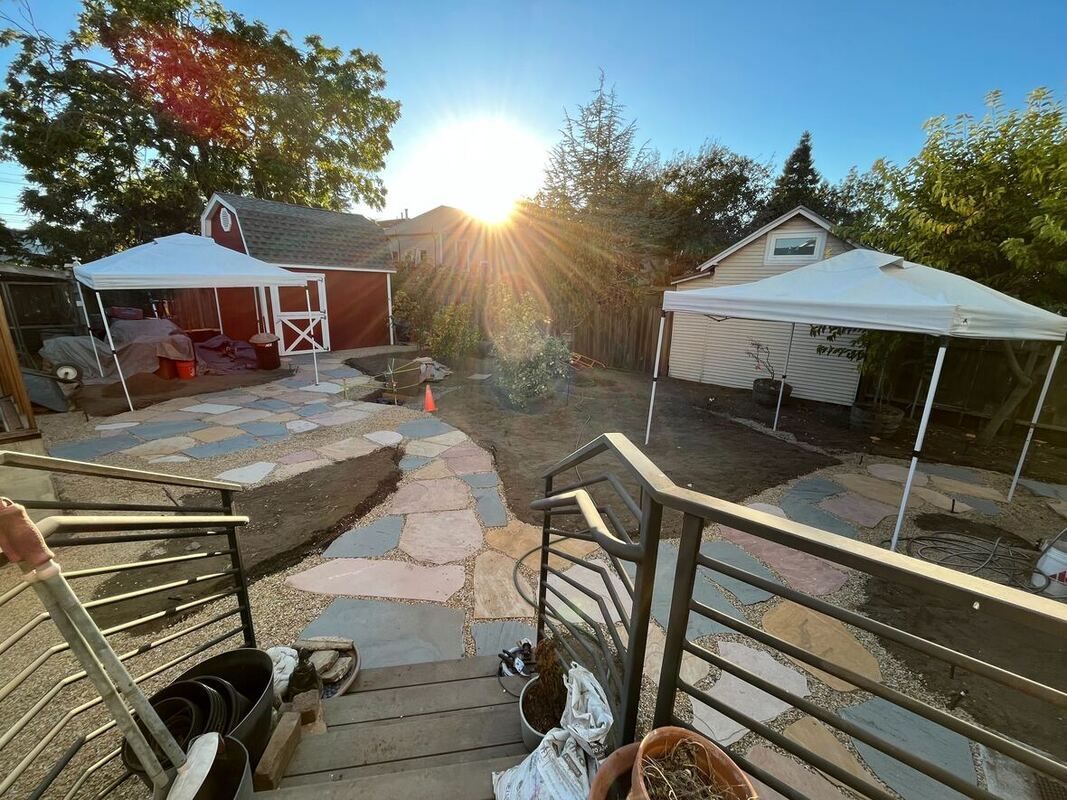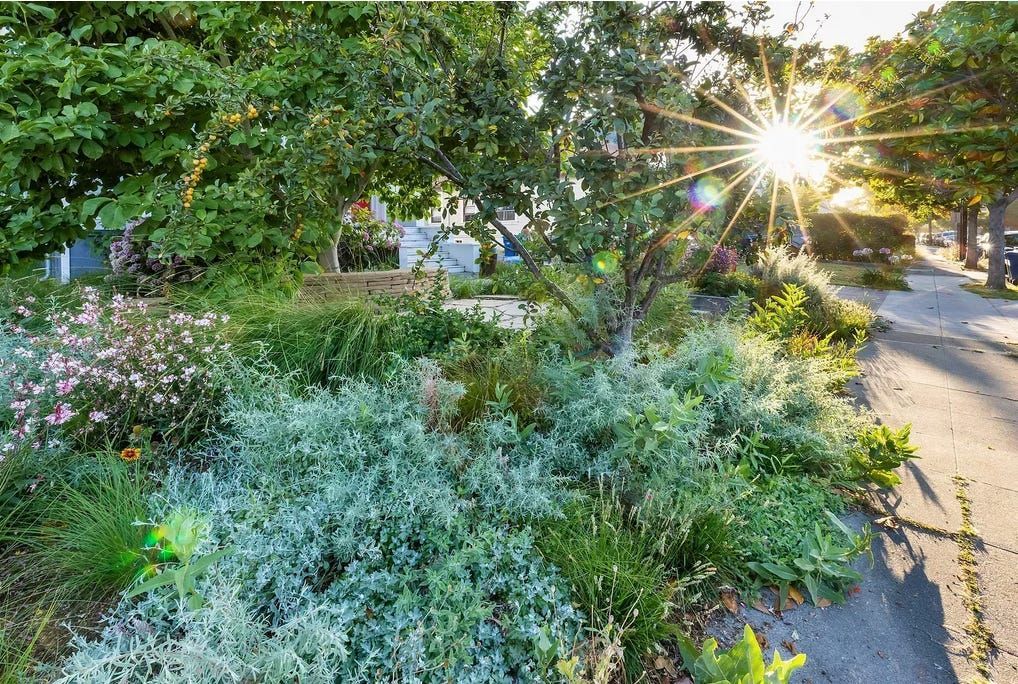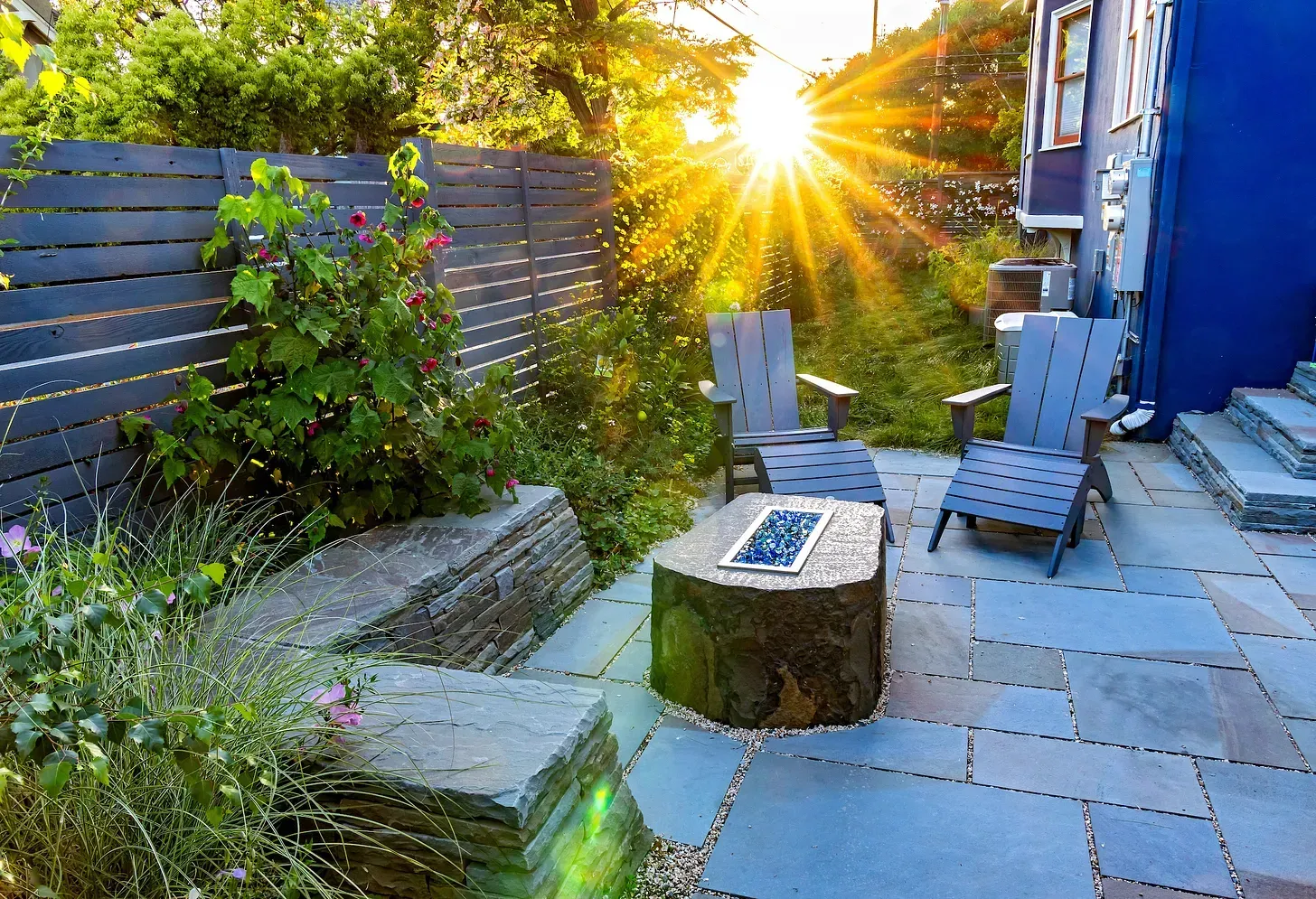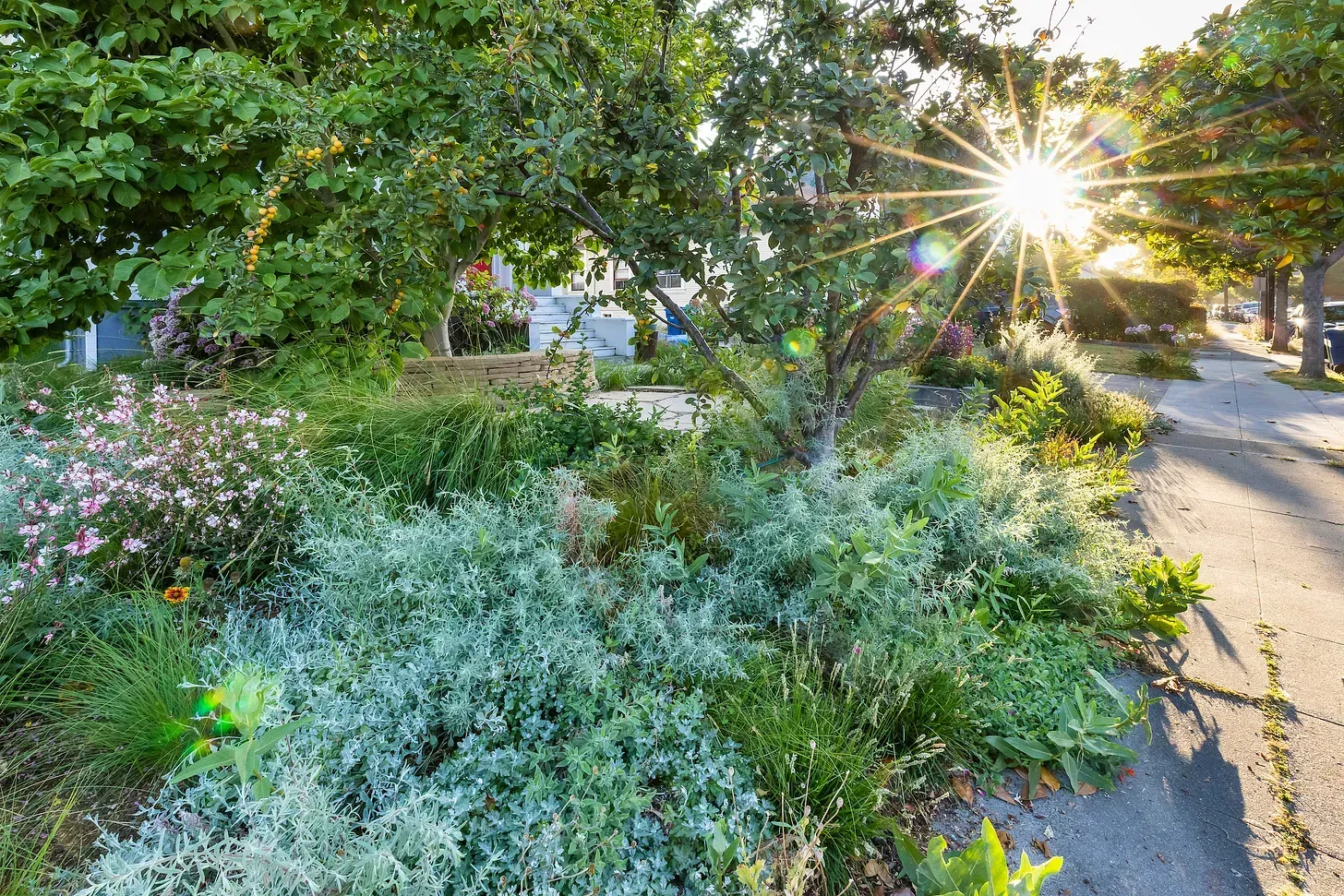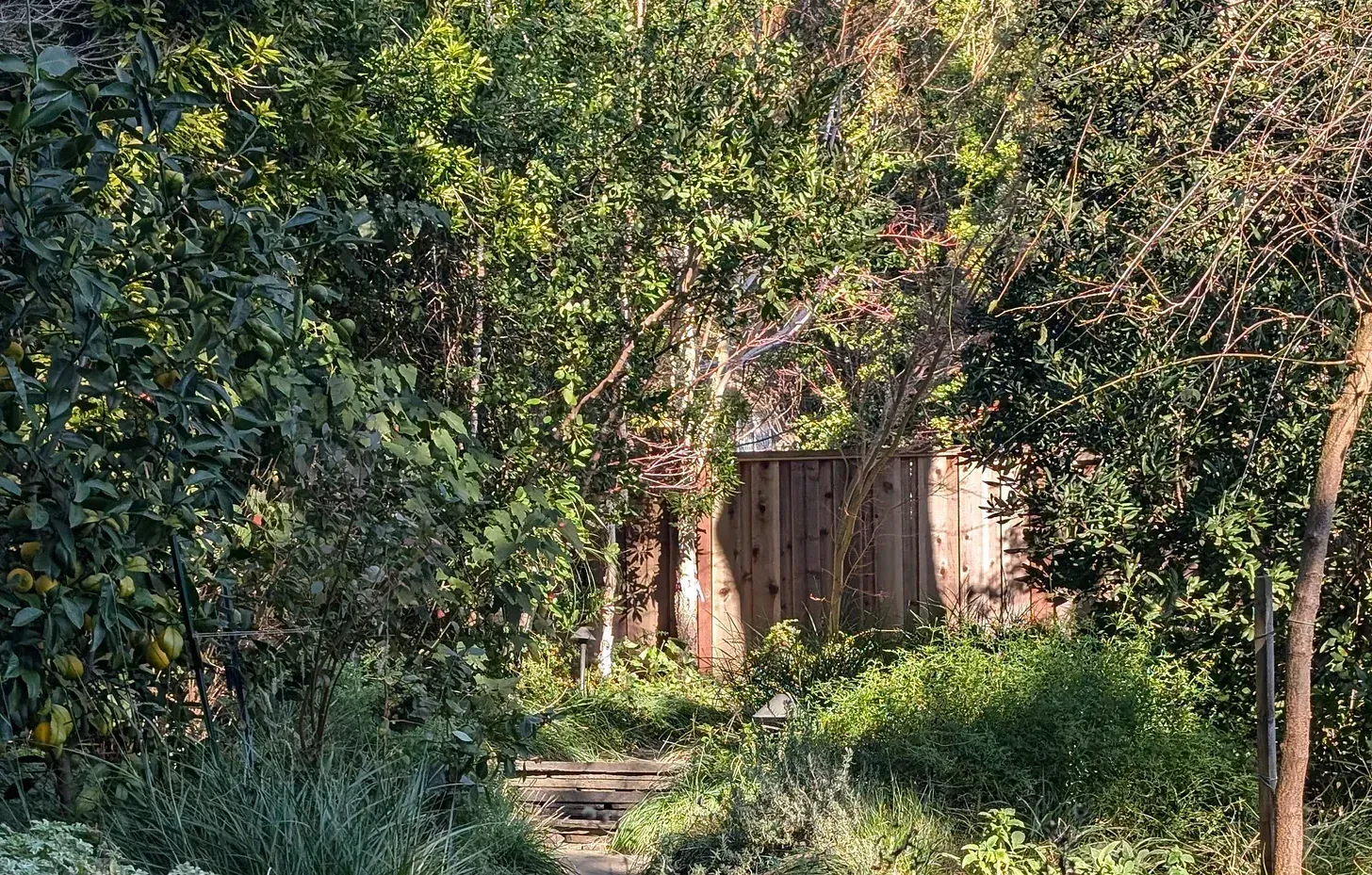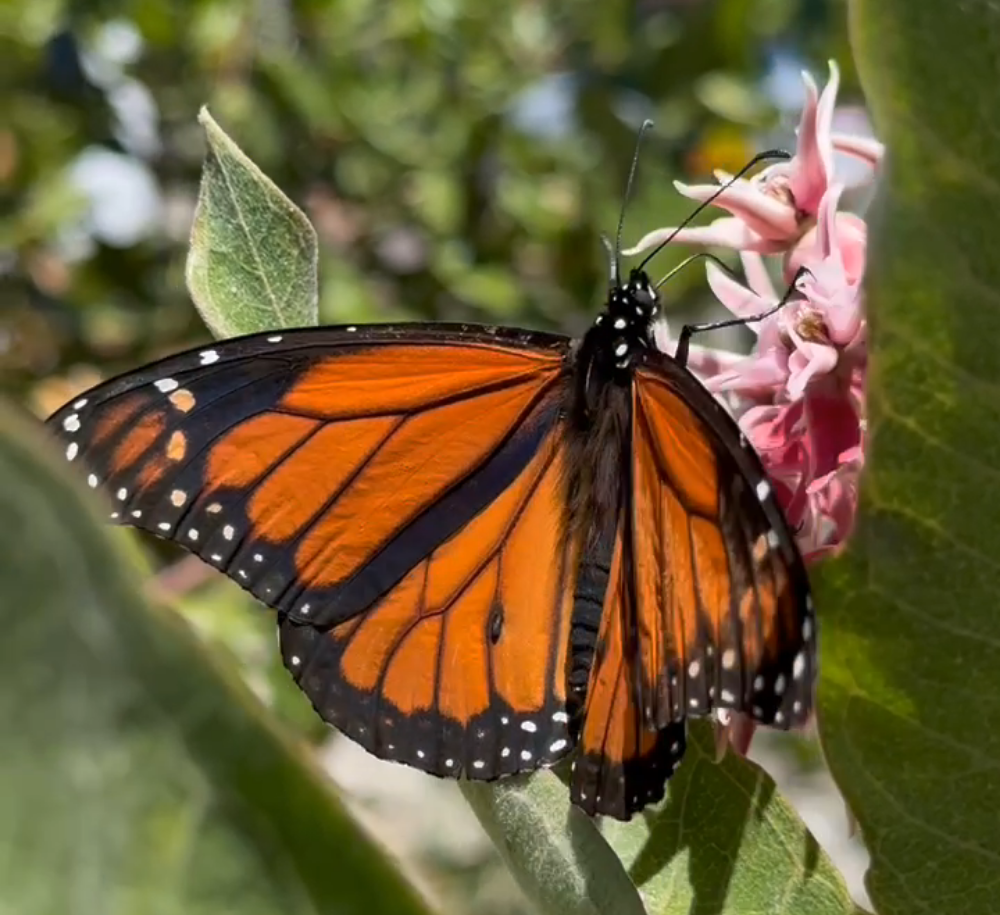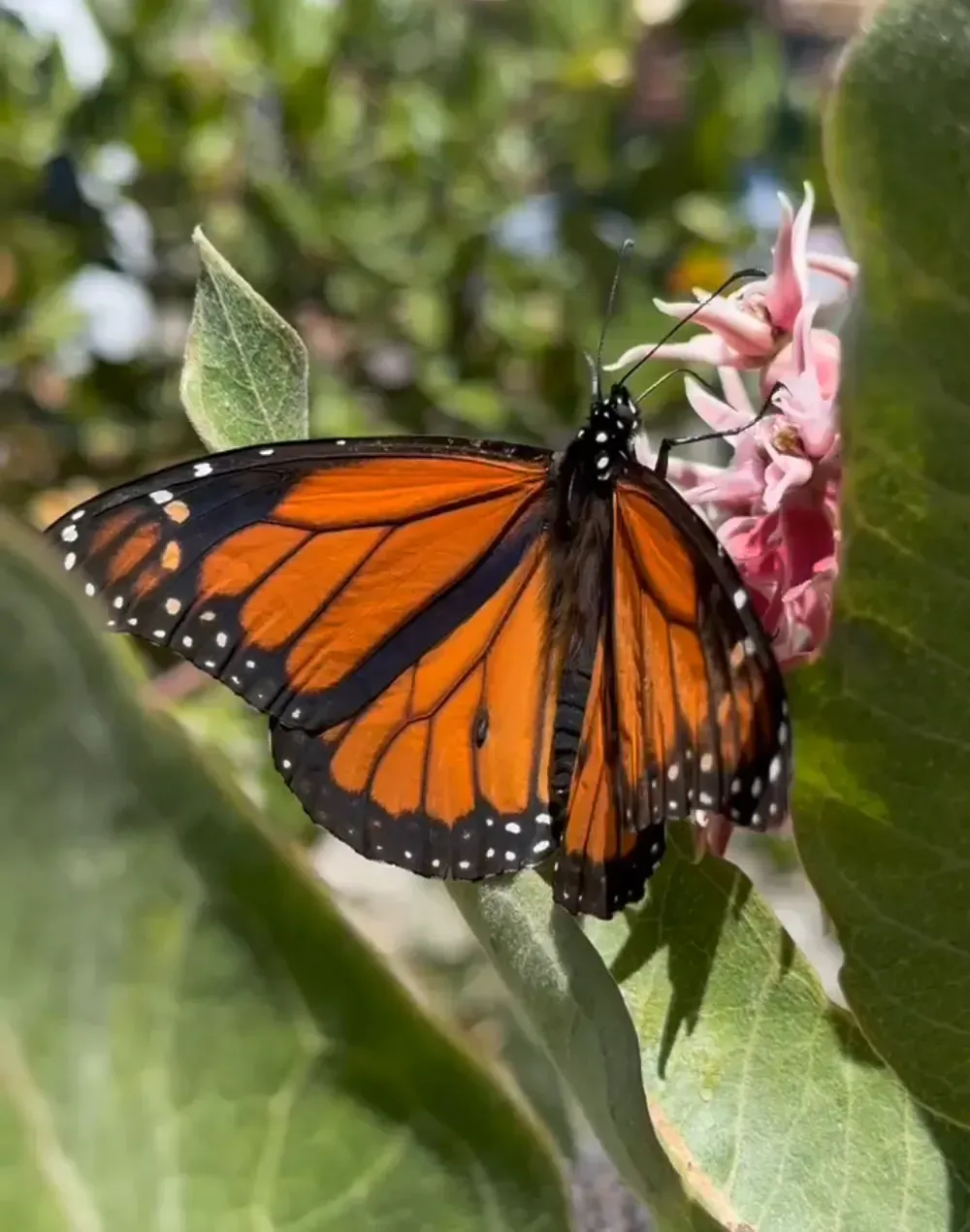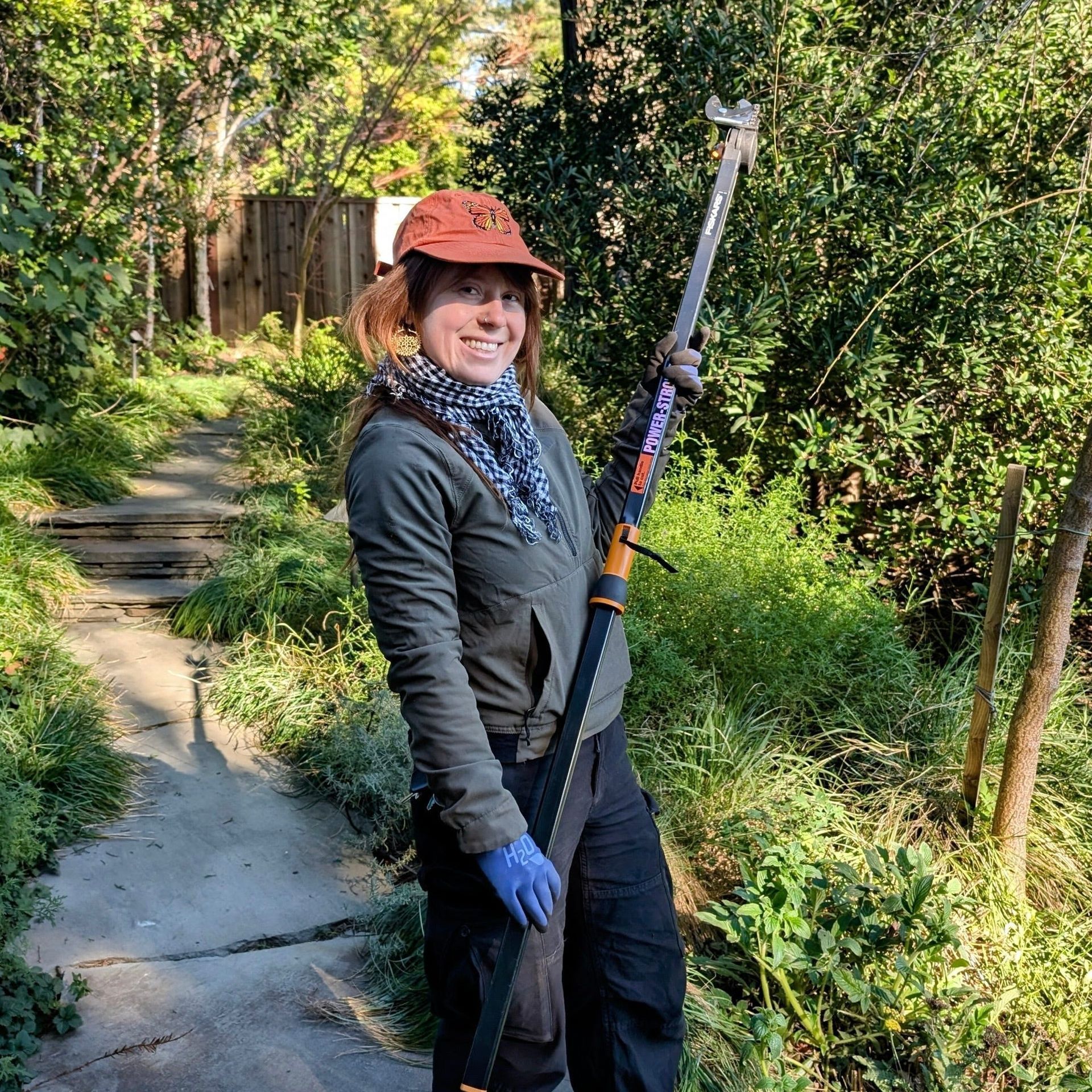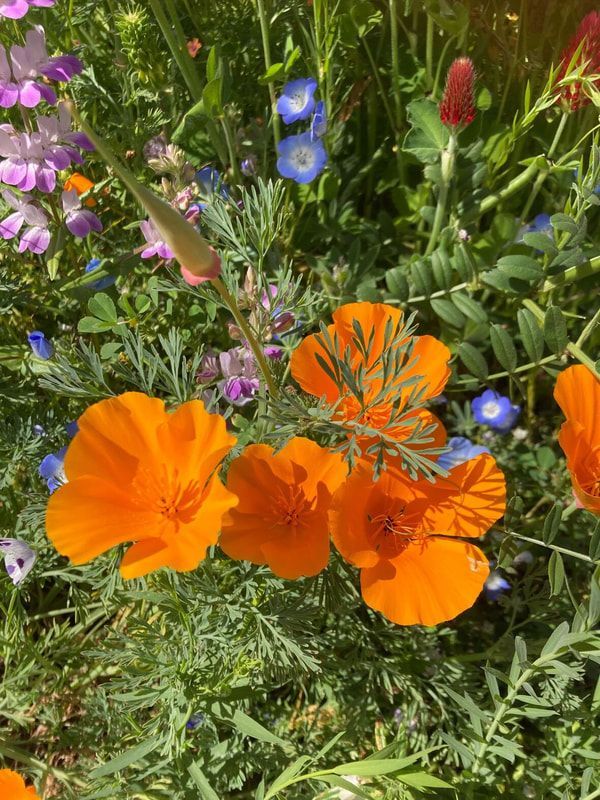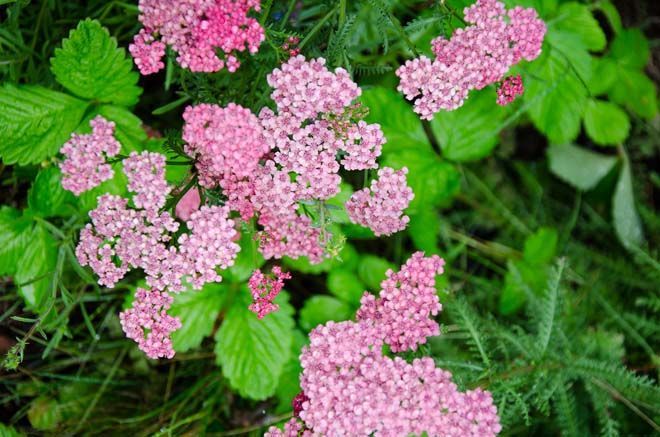A New Year's Tale of Getting Your Garden off to a Good Start!
How we prep for planted areas at Mariposa
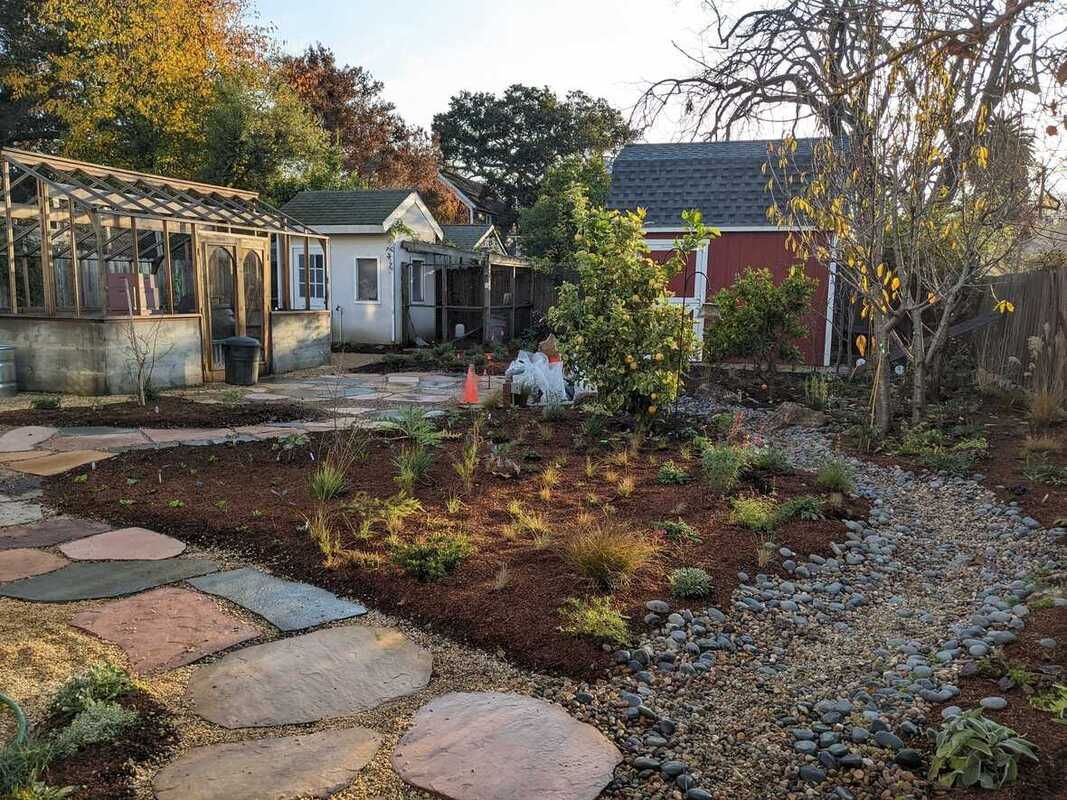
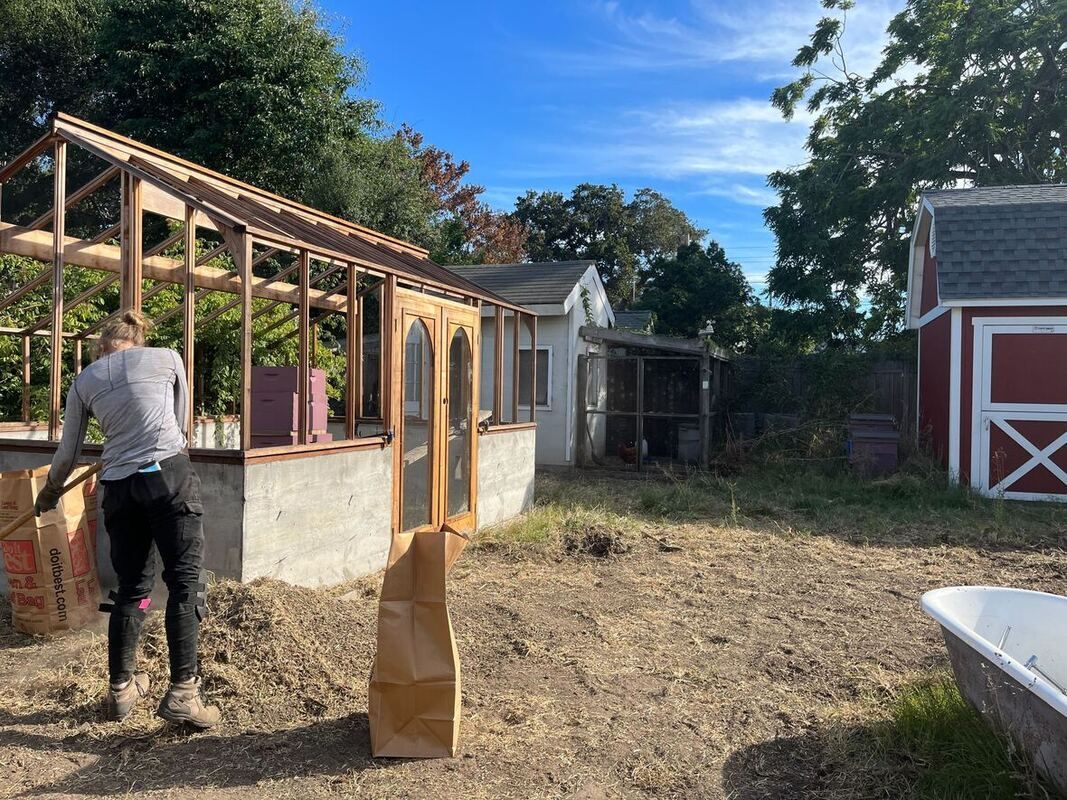
Minimize the weed pressure!
The Mariposa Team does it all for your garden; Design, Installation and Maintenance (or what we like to call 'Garden Care'). After the garden is in, we don't want our Garden Care team to be doing excessive weeding. So, over the years, we have perfected our approach to prepping your soil so that when our garden care team comes to care for your plants, the weed pressure is minimal. We do this through a series of steps, the first of which is to hand weed. In the garden we are featuring here, we did an initial weeding and then after about a week, when the crabgrass started to sprout again, we did an even deeper weeding to make sure we got as many of the roots out as possible. (Keep an eye on the red barn storage shed, this will help keep the perspective, as the garden changes).
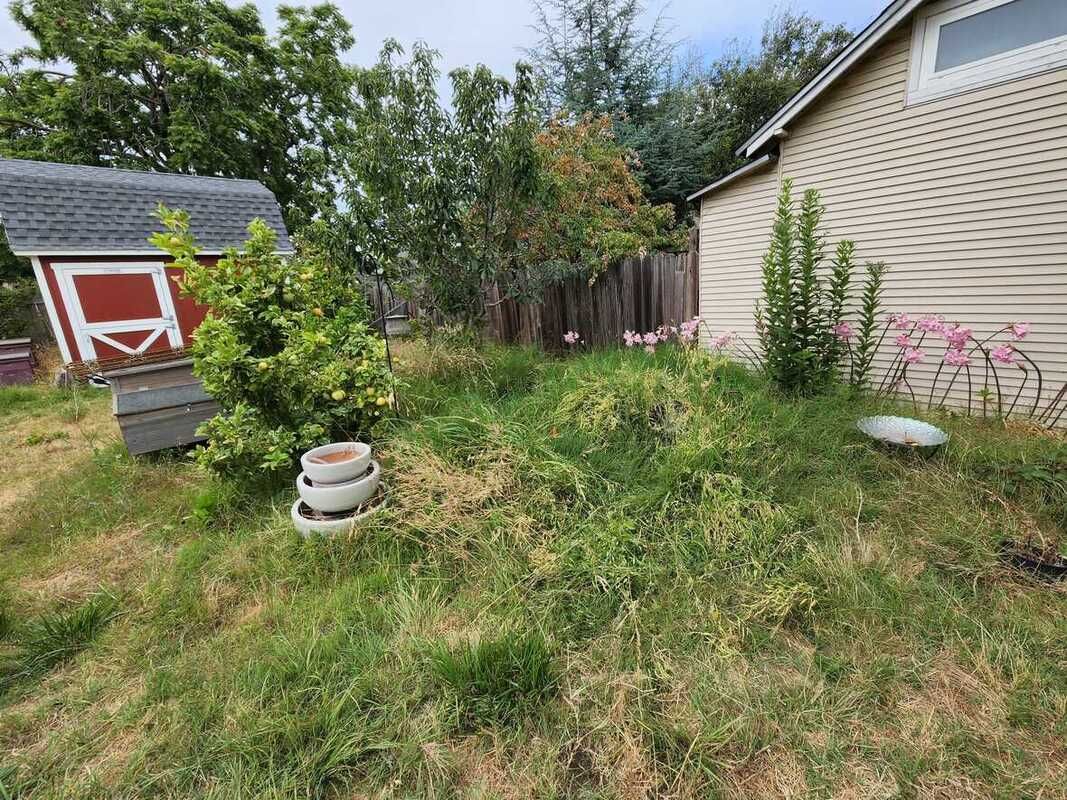
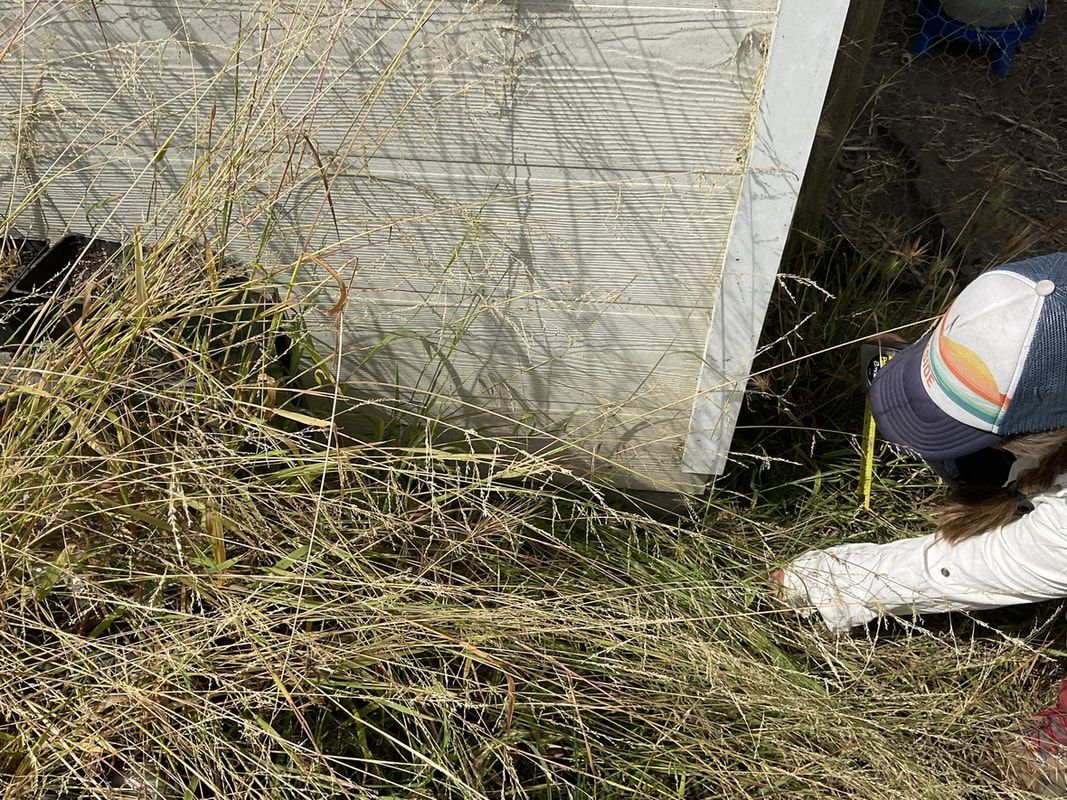
How to mitigate a weedy "lawn"
When we arrived, the crabgrass and ehrharta were everywhere They were tall and well established. In addition, oxalis has infected many areas of the garden. We only noticed the oxalis after we had started our weeding this past October as oxalis only grows when temperatures are below 70 degrees. This can keep it hidden if we are designing a garden during the warmer months. However, once we start the clearing process, the tell tale bulblets will reveal themselves, so we know to take care of them too. When we initially come in and assess a new garden that is infected with weeds that are especially tenacious, we take note. We do not want to be dealing with them after the garden is finished. We want our clients to be happy with the results and to have a garden who's plants are thriving and not competing with the weeds. Crabgrass, ehrharta and oxalis are some of the most difficult weeds to deal with. Between the three, we had deep roots, easily spreading seeds and bulblets that can imbed themselves deeply into the soil and regrow quickly.
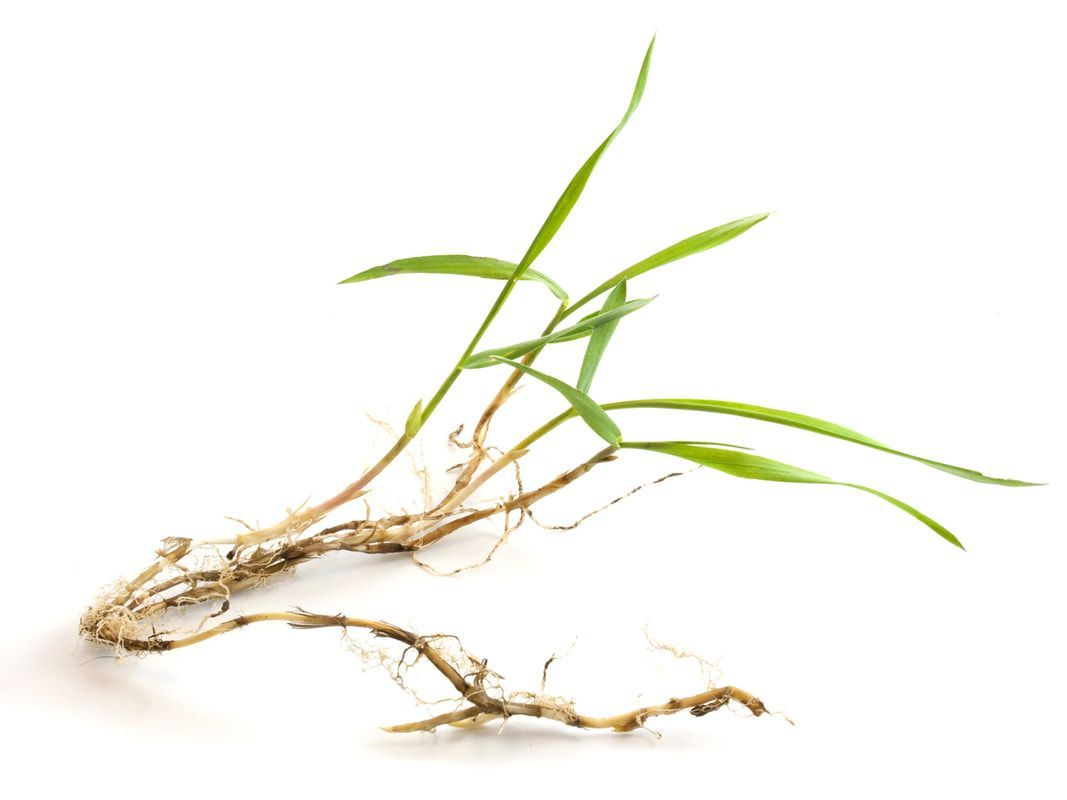
Once we remove all the weeds, we will flame weed. Flame weeding involves a special flame weeding torch that attaches to a typical grilling gas tank. The blue hot flame is quickly moved over the soil, effectively eliminating any existing weed seeds that are on top of the soil and desiccating any remaining roots that we may have missed. This is a very good way to prevent weeds from sprouting after we plant the new garden.
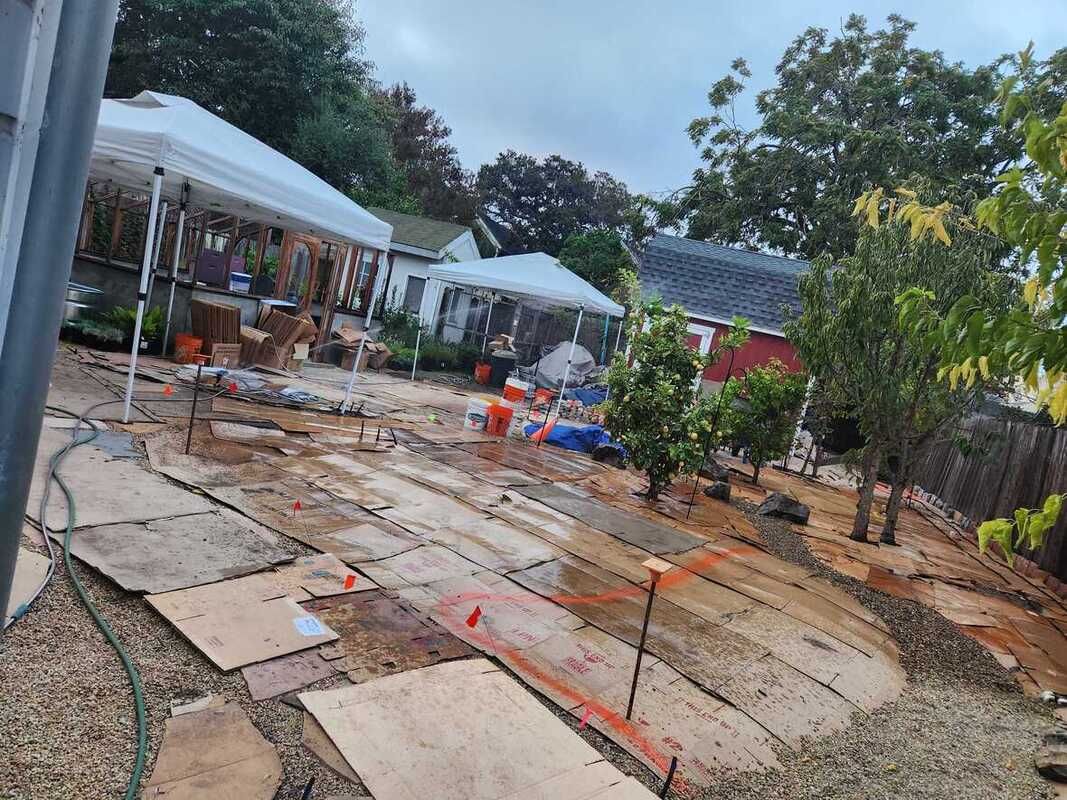
Its all about the cardboard!
At Mariposa, we believe in doing all that we can to protect the planet. One of the things that we do, which always feels like a win win is to lay down 2 layers of cardboard after the flame weeding is done. If we have discovered oxalis, we lay down 4 layers of cardboard. Cardboard is a great way to protect the soil and keep the weed pressure down. It is just enough of a barrier to discourage any weeds from coming up right after planting. However, it will decompose over a short period of time, allowing the soil to breathe. Typically, the plants we want to grow will have a bit of a head start with the cardboard in place suppressing the weeds. Once the cardboard breaks down, the desirable plants have filled in and the weeds are outcompeted. At Mariposa, one of our standards of practice is to collect cardboard that others are throwing away. One can purchase rolls of cardboard from box stores that sell building materials, but our aim is to make use of what is otherwise a waste source. We will find our cardboard in recycling bins, at the recycling center and our staff will bring cardboard from our own homes. If you have extra cardboard to discard of, please let us know! We will happily come pick it up and put it to use in one of our many gardens.
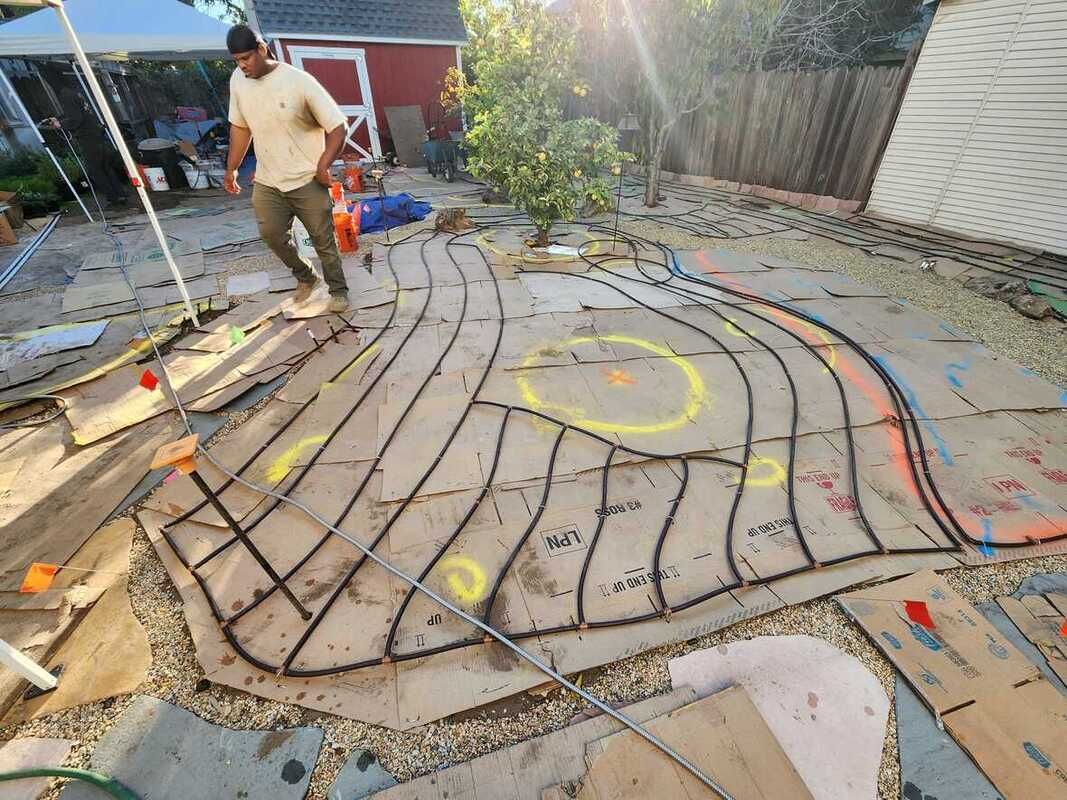
And Netafim!
Another thing we do before we plant is to put in a grid of netafim irrigation. The netafim is a 1/2" line of irrigation tubing that has emitters spaced every 12." This allows the soil to be evenly saturated, like a damp sponge. When we keep the soil saturated at this level, every drop of water that hits the soil is wicked into it evenly. This level of saturation is good for nearly all plants, whether they prefer slightly drier or slightly moister soil. Even saturation keeps all plants healthy and thriving. Soil with even saturation is able to support a wide diversity of micro and macro organisms in the soil. Bioactivity in the soil keeps the soil healthy and your plants thriving. Our favorite place to purchase all of our irrigation supplies, including netafim, is Urban Farmer, a Bay Area legendary irrigation supply store.
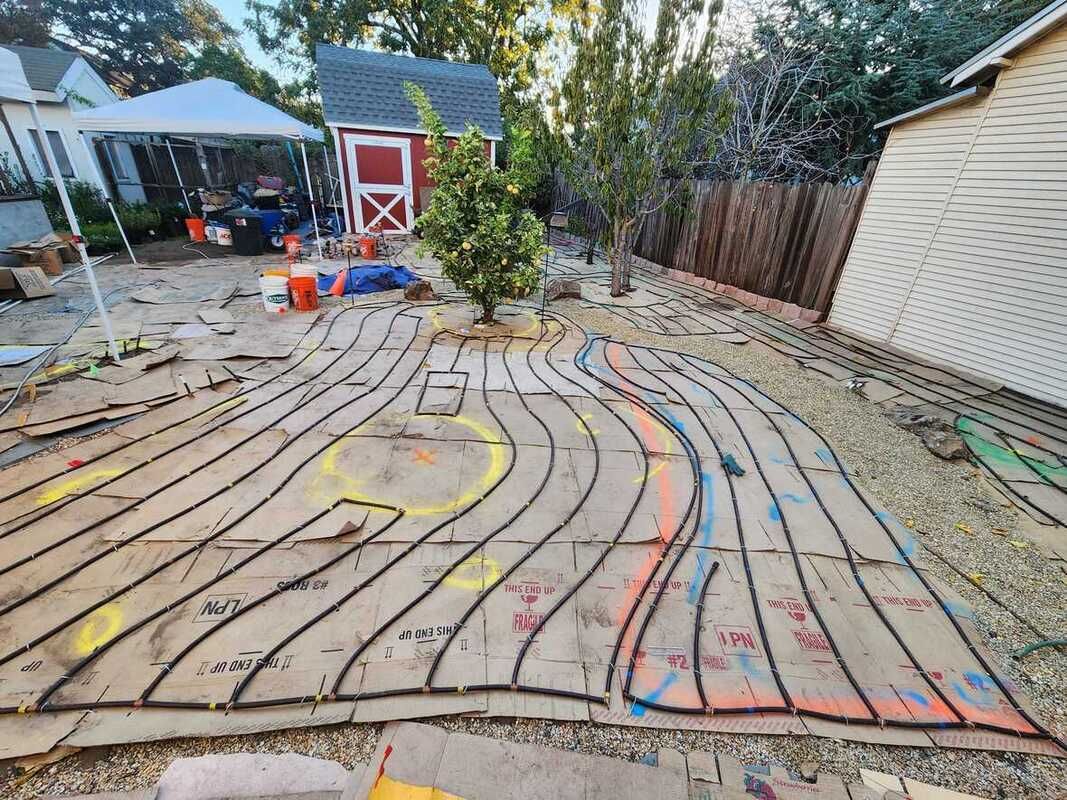
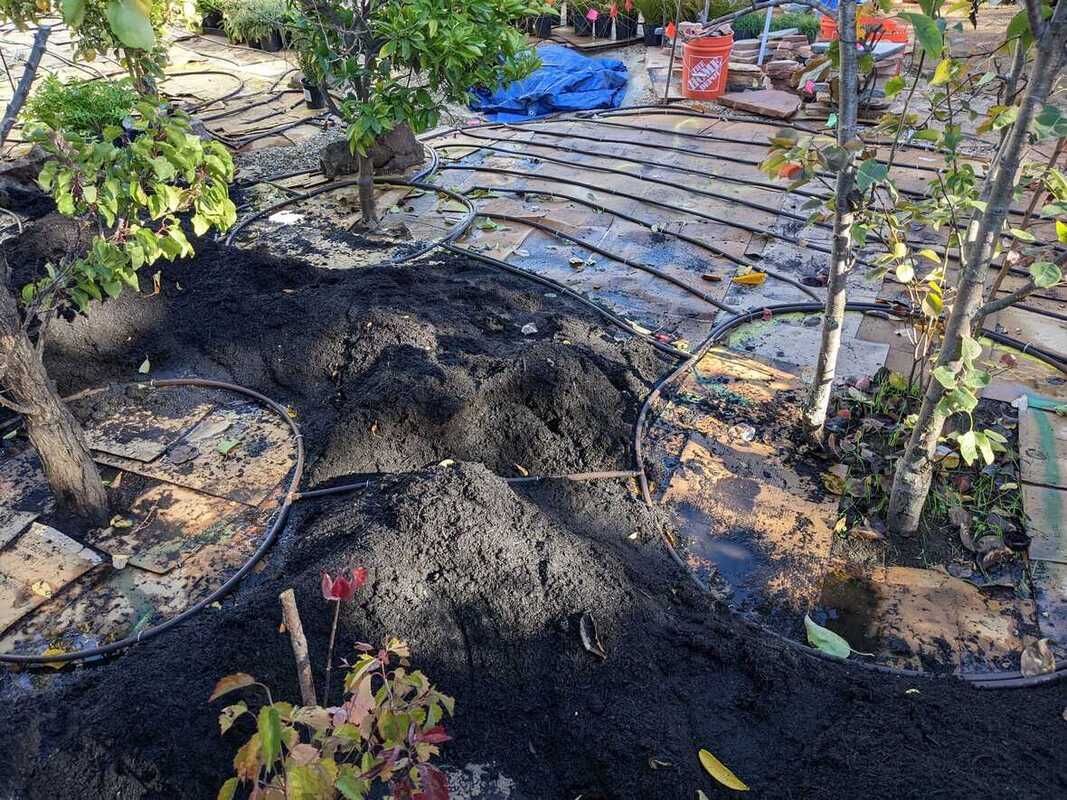
Once the irrigation lines are all laid out, we add 3" of organic compost. Our favorite is a product called "Wondergrow." It can be purchased by the bag or by the yard from American Soil and Stone in Richmond, CA. The netafim lines are intended to be buried 3" under soil or compost. The beauty of this is that the water you are using to irrigate your garden does not evaporate the way it does with overhead sprayers.
